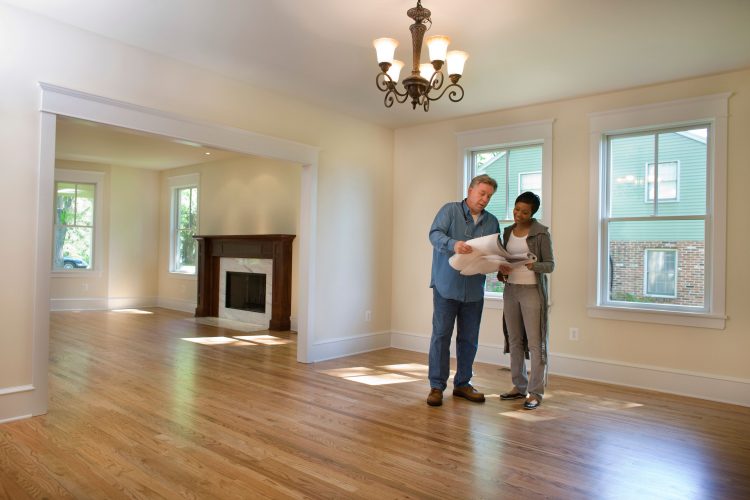Price per square foot emerges as a foundational metric within real estate, offering a rudimentary gauge for assessing property values.
By dividing a property’s price by its total square footage, PPSF yields a figure that ostensibly facilitates direct comparisons across diverse properties.
Its appeal lies in its simplicity, allowing a quick snapshot of value to guide initial market analysis and property evaluations.
However, this simplicity belies a complex underpinning that can often mislead buyers and sellers. The metric’s surface-level analysis fails to encapsulate the nuanced factors significantly influencing property value.
Location quality, property condition and unique attributes are all factors that mislead it.
In my thirty-eight years of experience in real estate, I often see real estate agents blindly using this metric. It often leads to inaccurate home pricing.
You can see the evidence with the thousands of properties that get reduced every week in price. Often this is a result of inexperienced agents using this terrible metric.
What is the price per square foot?
Price per square foot is a calculation used in real estate to assess the value of a property. It measures how much a buyer pays for one square foot of the property’s area.
To find this figure, you divide the selling price of a home or building by its total square footage. This metric helps compare the costs of different properties, providing a straightforward way to evaluate real estate prices based on size.
Limitations of PPSF
Lack of standardization
The absence of a standardized method for measuring square footage introduces a fundamental flaw in the PPSF calculation. Different regions and entities may adopt varying standards, leading to discrepancies in square footage reporting.
Consequently, PPSF comparisons can become skewed, as the metric’s accuracy hinges consistently on measurement—a condition seldom met in practice.
Overlooking property condition
A critical oversight of PPSF is its neglect of the property’s condition. Two properties may share identical PPSF values while differing markedly in upkeep and presentation. Some things could need to be fixed in one home vs minor in another.
This discrepancy can lead to misleading valuations, as PPSF does not account for the financial implications of repairs or renovations necessary to bring a property up to a certain standard.
Impact of location
The adage “location, location, location” underscores the importance of geographical setting in real estate valuation. PPSF, however, offers no insight into the desirability of a property’s location, overlooking factors such as neighborhood amenities, local schools, and community safety.
This omission can lead to a distorted understanding of a property’s market value. It’s a concept that is especially important for first-time sellers to understand.
Ignoring unique features
Properties often possess distinctive features that can significantly affect their appeal and, by extension, their value. Whether it be panoramic views, architectural uniqueness, or historical significance, such attributes are invisible within the PPSF calculation.
This metric’s inability to factor in these elements can result in an undervaluation of properties that offer more than just space.
Variability across market segments
The relevance of PPSF fluctuates across different market segments, rendering it an unreliable measure in specific contexts.
Luxury properties, for example, may exhibit inflated PPSF due to high-end finishes and customizations. In contrast, smaller properties might display elevated PPSF figures that do not necessarily correlate with higher market value.
It’s almost as bad as trying to use assessed value vs market value.
Misleading in mixed-use and non-residential properties
PPSF’s applicability wanes further when considering mixed-use or non-residential properties. These property types often derive value from factors such as commercial viability and rental income potential—criteria that PPSF fails to capture.
When PPSF fails as a valuation metric
High-end properties
Luxury real estate often defies simplification through metrics like PPSF. The bespoke nature of high-end properties, with their custom features and finishes, means that PPSF can obscure rather than illuminate real value, leading to comparisons that are not only inaccurate but potentially misleading.
Smaller properties
The fixed costs associated with property transactions can disproportionately inflate the PPSF of smaller properties. This phenomenon can misguide potential buyers into overestimating the value of such properties based solely on their PPSF, overlooking the broader market context that might offer a more accurate valuation perspective.
Unique or historic properties
Properties that carry unique or historical significance present a challenge for PPSF valuation. The intrinsic value of such properties often extends beyond their physical dimensions, encompassing elements that are not quantifiable in square footage terms.
This makes PPSF an inadequate tool for capturing these properties’ essence and value.
Rapidly changing markets
In markets experiencing rapid fluctuations, PPSF can quickly become outdated. This metric’s static nature does not accommodate the dynamic buyer preferences and market conditions shifts. This renders it unreliable to gauge current or future property values in volatile environments.
Alternatives to price per square foot in real estate valuation
Comparative market analysis (CMA)
A more holistic approach to property valuation is a comparative market analysis or CMA. This technique considers many factors, including but not limited to PPSF.
A CMA provides a nuanced valuation that can offer deeper insights into a property’s worth by analyzing comparable sales, property conditions and market trends.
Cost approach
The cost approach offers a valuation method based on the cost of land plus the cost of reconstructing the property. This approach is particularly relevant for unique properties where direct comparables are scarce. It allows for a valuation grounded in tangible investment rather than market speculation.
Income approach
The income approach provides a valuation based on the present value of expected future income streams for properties with income-generating potential.
This method is especially pertinent for investment properties, where the focus shifts from physical attributes to financial performance.
Professional appraisals
Engaging a professional appraiser can yield the most accurate and comprehensive property valuation. Professional appraisals incorporate a variety of factors, including PPSF, to deliver a detailed assessment of a property’s market value.
This approach ensures a balanced consideration of both quantitative metrics and qualitative attributes. Your home could be contingent and fall through if you relied on price per square foot.
Conclusion
While a valuable tool for quick comparisons, the price per square foot needs to be revised as a comprehensive measure of real estate value.
Its limitations—ranging from a lack of standardization to an inability to account for unique property features—underscore the need for a multifaceted approach to property valuation.
Buyers, sellers and investors are encouraged to look beyond PPSF, exploring alternative valuation methods that accurately reflect a property’s true worth.
In doing so, stakeholders can navigate the complex real estate landscape with greater confidence and insight.












